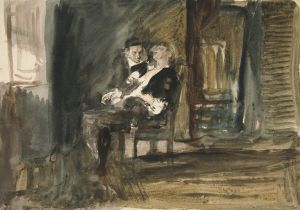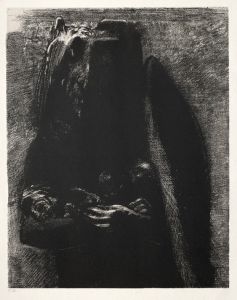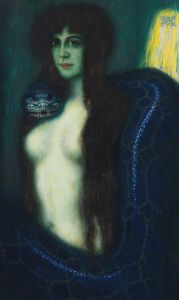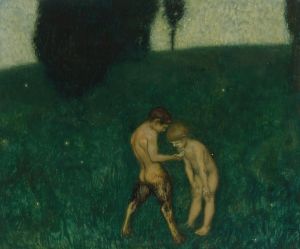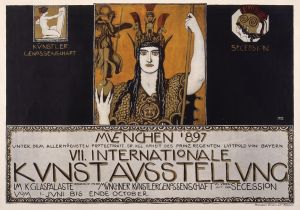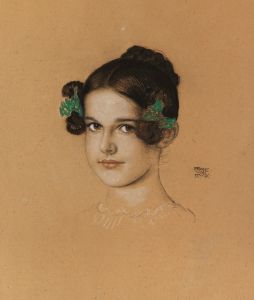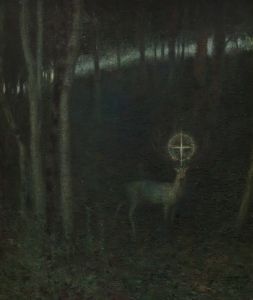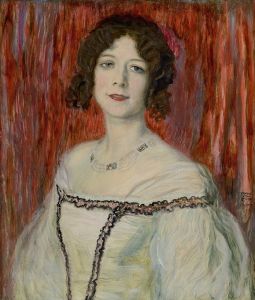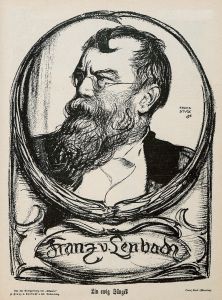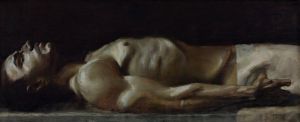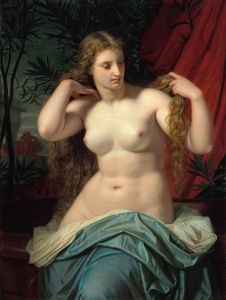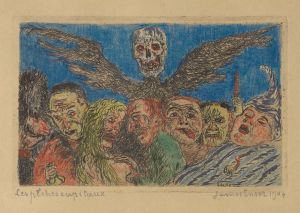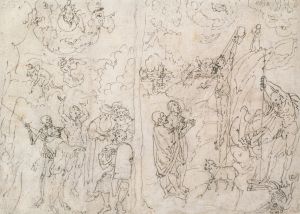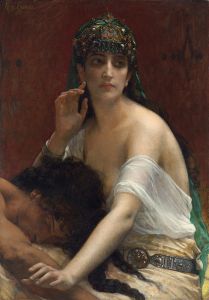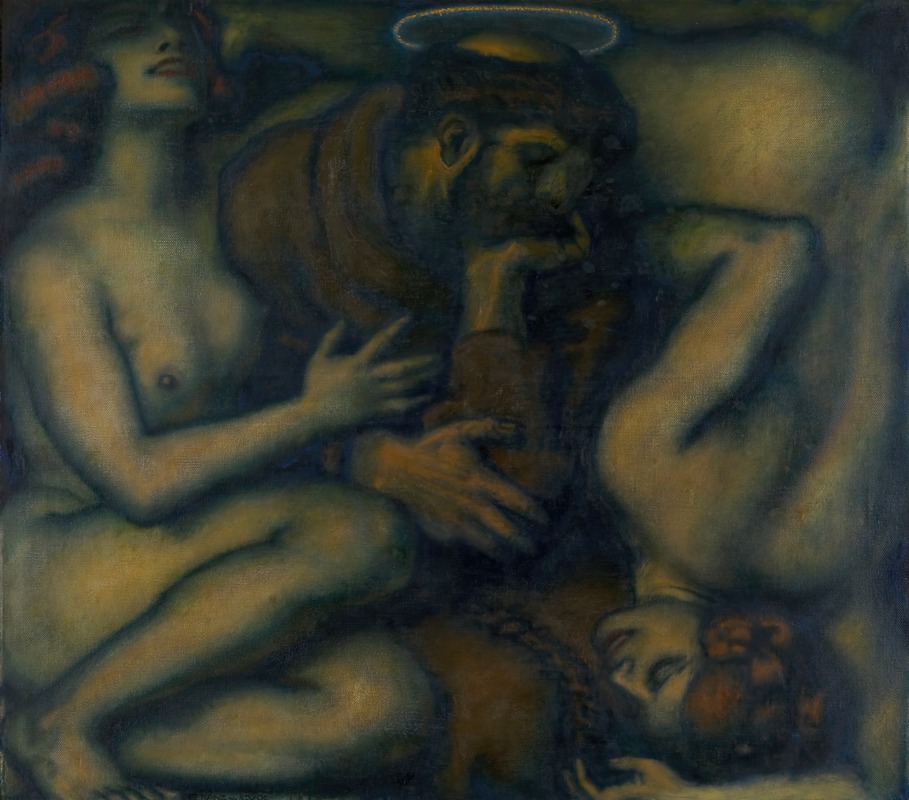
Temptation
A hand-painted replica of Franz von Stuck’s masterpiece Temptation, meticulously crafted by professional artists to capture the true essence of the original. Each piece is created with museum-quality canvas and rare mineral pigments, carefully painted by experienced artists with delicate brushstrokes and rich, layered colors to perfectly recreate the texture of the original artwork. Unlike machine-printed reproductions, this hand-painted version brings the painting to life, infused with the artist’s emotions and skill in every stroke. Whether for personal collection or home decoration, it instantly elevates the artistic atmosphere of any space.
Franz von Stuck's painting "Temptation" is a notable work by the German symbolist artist, created in 1899. Stuck, who was a prominent figure in the Munich Secession movement, is renowned for his exploration of mythological and allegorical themes, often infused with a sense of mysticism and psychological depth. "Temptation" is a quintessential example of his style, characterized by its dramatic use of color, composition, and symbolic content.
The painting depicts the biblical story of Adam and Eve, a subject that has been a rich source of inspiration for artists throughout history. In "Temptation," Stuck presents a moment of profound significance: the encounter between Eve and the serpent in the Garden of Eden. The composition is dominated by the figure of Eve, who is portrayed with an air of both innocence and seduction. Her gaze is directed towards the serpent, which is coiled around a tree, symbolizing the forbidden knowledge and the impending fall from grace.
Stuck's use of color in "Temptation" is particularly striking. The palette is rich and earthy, with deep greens and browns that evoke the lushness of the garden setting. The serpent, rendered in a sinuous and almost hypnotic form, is highlighted with a sheen that draws the viewer's attention, emphasizing its role as the catalyst of temptation. Eve's skin is depicted with a luminous quality, contrasting with the darker tones of the background, which serves to isolate her figure and underscore her vulnerability.
The painting is imbued with a sense of tension and foreboding, capturing the pivotal moment before the fall. Stuck's portrayal of Eve is both sensual and contemplative, reflecting the dual nature of temptation as both alluring and perilous. The serpent, a traditional symbol of deceit and sin, is rendered with an almost mesmerizing beauty, challenging the viewer to consider the complex interplay between innocence and corruption.
Franz von Stuck's "Temptation" is a testament to his skill as a painter and his ability to convey complex themes through visual art. The work exemplifies the Symbolist movement's focus on exploring the deeper, often darker aspects of human experience and the subconscious. Stuck's interest in mythology and allegory is evident in his choice of subject matter, as well as in his meticulous attention to detail and composition.
"Temptation" is housed in the Städtische Galerie im Lenbachhaus in Munich, Germany, where it continues to be a significant attraction for art enthusiasts and scholars alike. The painting not only reflects Stuck's mastery of technique but also his ability to engage with timeless themes that resonate with audiences across generations. Through "Temptation," Stuck invites viewers to reflect on the nature of desire, the consequences of choice, and the eternal struggle between good and evil, making it a compelling and enduring work of art.





